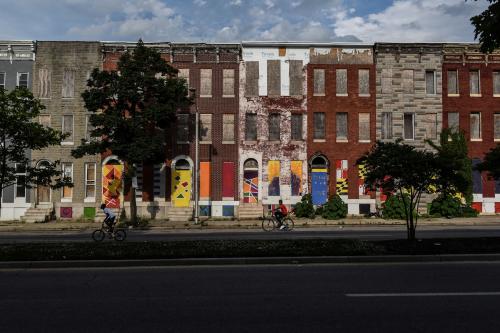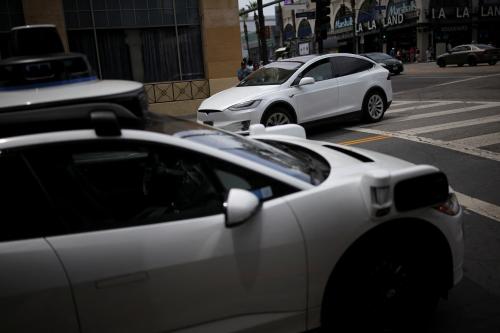As the United States slowly emerges from the Great Recession, it’s clear that cities and metropolitan areas need to find their own economic game changer to create jobs, unlock value, and attract private investment.
Philadelphia could supercharge its economy by growing a globally significant Innovation District.
It is no secret that Philadelphia needs to do a better job of turning ideas into new companies and new products. A 2011 study by Select Greater Philadelphia ranks the region as a top-five research and development center nationally, yet, in measures of commercialization, the city doesn’t perform as highly. It falls to 11th in total venture capital, and is 12th in patent production, behind not only San Francisco and Boston, but also Detroit. Its rate of patents per worker is very low: 71.
But Philadelphia has an underappreciated advantage – not just a wealth of advanced research institutions and consortia, but also their proximity to each other. This density can create an environment – an innovation district – in which investors, inventors, entrepreneurs, and workers can interact spontaneously and frequently with each other.
Innovation districts, unlike the exurban science parks of the last century, cluster anchor institutions and cutting-edge companies alongside smaller entrepreneurial firms, mixed-use housing, office, retail, and 21st-century amenities and transportation. These districts reflect the growing penchant for firms to practice “open innovation” and work closely with networks of firms, universities, and supporting institutions. These districts also provide what talented workers increasingly want in the places they live and work: livability, walkability, and transit connectivity.
The core of a world-class innovation district in Philadelphia could be the institutions of University City. There is a rich opportunity to further capitalize on the constellation of innovation assets along a tract that runs north and west of 30th Street Station, the iconic gateway to the city. This area’s institutions – the University of Pennsylvania, Drexel University, and the University City Science Center – are a large part of the city’s 21st-century economic base and potential, and close by are Children’s Hospital of Philadelphia, the University of the Sciences in Philadelphia, and the Hospital of the University of Pennsylvania, as well as the nascent growth along the lower Schuylkill.
Momentum is already under way. First, Stephen Tang, president and CEO of the University City Science Center, has started to cluster the right ingredients – incubator space, collaborative venues, social networking, product competitions, technical mentoring, and even the residential space that creates a 24/7 neighborhood – at the center, providing a foundation for further activity along Market Street and beyond. These efforts can be amplified by the creation of special regional funds dedicated to providing capital to inventors. The tax reform pushed by Mayor Nutter and others has already made the city more attractive to investment firms; continued reforms would further remove disincentives for start-up companies to locate in the district.
Second, this area can make a one-of-a-kind offer to businesses and residents alike. Drexel President John Fry’s ambitious plan to recapture land now covered by railroad tracks has all the makings of a signature, transformative investment. On a smaller scale, replicating the complex elements that Paul Levy, president and CEO of the Center City District, and others have used to create one of the most distinctive downtowns in the country – a mash-up of housing types, restaurants, retail options, well-maintained public spaces, pleasing streetscapes, and transportation access – is essential to growing an Innovation District. The city can help, providing flexible zoning and land use, safe streets, and efficient services. The federal and state governments, if they are smart, can provide strategic infrastructure investments.
Finally, the Innovation District would only reach its fullest potential by creating opportunities for the residents who live nearby. It would not solve the School District’s budget crisis, but it could offer smaller-scale benefits, such as an opportunity to build a school-to-work pipeline. Many jobs in the innovation economy require customized technical training in high schools or community colleges. Imagine the impact of a high school dedicated to providing students with skills and apprenticeships in health care and biomedical research institutions and companies. This is the path to creating quality jobs with good wages for a population that is normally left behind as cities revive.
Five years after the Great Recession, Philadelphia faces major economic, fiscal, and social challenges. But it also has enviable assets and advantages that, with strategic focus and investment, could make it an engine for growth for decades to come. A world-renowned Innovation District would truly be a game changer for the Philadelphia region.
Editors Note: This opinion originally appeared in
The Philadelphia Inquirer
on October 7, 2013.
The Brookings Institution is committed to quality, independence, and impact.
We are supported by a diverse array of funders. In line with our values and policies, each Brookings publication represents the sole views of its author(s).



Commentary
Op-edA Call for Innovation in Philadelphia
October 8, 2013